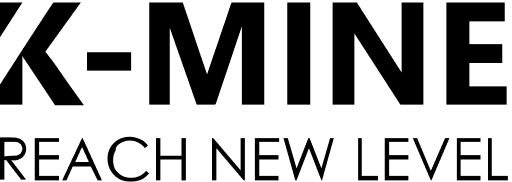
The Future is Here: AI and Machine Learning in Mining. Part 2
Content
In the relentless pursuit of hidden resources beneath the Earth’s crust, humans have always sought ways to make the invisible visible. From early divining rods to present-day geological surveys, mineral exploration has been an exercise in perception, persistence, and often, a bit of luck.
Traditional mineral exploration methods, such as geological mapping, geochemical analysis, and drilling, have served us well, and we’ve developed an impressive understanding of our planet’s subterranean secrets. But what if we could augment our existing knowledge and methodologies, make the process more precise, predictive, and efficient? Well, as it turns out, we can. Thanks to Artificial Intelligence (AI), we’re now experiencing a shift in how we approach mineral exploration, a shift as profound as the one from divining rods to seismic surveys.
So, buckle up as we embark on a journey to explore how AI is shaping the future of mineral exploration and, in turn, the mining industry. It’s time to see how we are teaching our machines to find the metaphorical needles in the vast haystack that is our planet.
The Traditional Process of Mineral Exploration
Mineral exploration is a methodical, multistage process that uncovers hidden treasures beneath the Earth’s surface. Starting from preliminary prospecting based on geological mapping and sampling, the process narrows down potential areas of interest. This is followed by a more focused exploration involving geochemical analysis, geophysical surveys, and ultimately, exploratory drilling to confirm the existence of a mineral deposit.
The process requires a deep understanding of the Earth’s geology and often, a good dose of intuition. It’s a complex, time-consuming, and costly endeavor, fraught with uncertainties. Despite employing cutting-edge technologies, there’s always the risk of spending significant resources only to conclude that a site is unviable. Or worse, overlooking a potential bonanza.
Besides, the traditional exploration methods are heavily reliant on the experience and expertise of a skilled geologist. As a result, the analysis is as good as the person making it. Given the subjective nature of the process, two experts may draw completely different conclusions from the same data.
It’s in this landscape, where the traditional process, though effective, often proves to be challenging and resource-intensive, that AI steps in. With its ability to process vast amounts of data quickly and accurately, AI can streamline the mineral exploration process and address many of its inherent challenges. Let’s dive deeper into this exciting convergence of geology and artificial intelligence.
How AI is Changing the Game in Mineral Exploration
Artificial Intelligence, a buzzword that has made a foray into almost every industry, is also transforming mineral exploration. By leveraging machine learning algorithms and advanced data analytics, AI offers new ways to interpret geological data and uncover patterns that might be invisible to the human eye.
Drone and satellite imagery is another area where AI is having a significant impact. Using machine learning algorithms, AI can analyze these images to identify geological structures indicative of mineral deposits. The ability to rapidly process and interpret these images can expedite the exploration process and increase its precision.
Moreover, AI can help manage and mitigate the risks inherent in mineral exploration. By simulating various scenarios and forecasting outcomes based on different input parameters, it can guide decision-making and improve operational efficiency.
AI is also breaking down the silos in which geological data has traditionally been held. Through integrated platforms, data from different sources and formats can be combined, providing a more holistic view of the exploration site.
In essence, AI is transforming mineral exploration from an inherently risky, intuition-driven process to a more data-driven, predictable one. However, the integration of AI into mineral exploration isn’t without its challenges and considerations.
Benefits and Advancements
There’s no denying that AI’s contribution to mineral exploration comes with an exciting array of benefits and advancements.
Let’s delve into a few of the significant advantages:
- Increased Accuracy: One of AI’s biggest contributions is its ability to increase the accuracy of exploration predictions. Through complex algorithms and predictive modeling, AI can provide insights into likely locations of mineral deposits, minimizing the uncertainty associated with exploration.
- Improved Efficiency: AI can process and analyze large datasets in a fraction of the time it would take a human. This rapid analysis allows for faster decision-making, significantly speeding up the exploration process and enhancing overall project efficiency.
- Cost-effectiveness: By improving accuracy and efficiency, AI also contributes to cost savings. It reduces the need for unnecessary drilling and allows companies to focus their resources on areas with high potential, making the entire exploration process more cost-effective.
- Enhanced Safety: By implementing AI-driven autonomous equipment and remote sensing technologies, companies can reduce human involvement in potentially hazardous exploration activities. This increased use of automation contributes to enhanced safety protocols.
- Sustainability: AI’s ability to predict the environmental impact of mineral exploration contributes to sustainable practices. It can help create exploration strategies that minimize ecological disruption and ensure compliance with environmental regulations.
- Innovation and Advancement: The application of AI in mineral exploration is driving innovation, prompting the development of new technologies and methodologies. It’s an exciting cycle, where advancements in AI fuel innovations in exploration, which in turn, drive further AI development.
These benefits underline the transformative potential of AI in mineral exploration. However, as we ride this wave of technological advancement, it’s crucial to also address the challenges and considerations that come with AI implementation.
Challenges and Future Directions
While the benefits of implementing AI in mineral exploration are immense, it’s not without its fair share of challenges.
Let’s highlight a few of these potential roadblocks:
- Data Quality: AI’s effectiveness is heavily reliant on the quality of data it’s fed. Ensuring data is clean, accurate, and consistent can be a major challenge, especially when dealing with vast amounts of data from disparate sources.
- Technology Adoption: AI technology requires a certain level of technological literacy to effectively implement and manage. The mining sector, being traditionally slower in adopting new technologies, may face resistance or lack the necessary skills to transition to these advanced systems.
- Cost of Implementation: Deploying AI technology can be expensive. It involves not just the cost of the technology itself but also the costs associated with training personnel, data management, and system maintenance.
- Data Privacy and Security: With increased digitalization comes the risk of data breaches. Ensuring robust data privacy and security measures is a paramount challenge in AI implementation.
- Ethical Considerations: AI systems need to be designed and used responsibly. Ethical considerations, such as potential job displacement due to automation and the responsible use of AI, need to be carefully addressed.
Despite these challenges, the future of AI in mineral exploration looks promising. Moving forward, we can expect to see more integration of AI with other technological advancements. Concepts like machine learning, the Internet of Things (IoT), and advanced analytics are likely to intertwine, creating a more connected, efficient, and intelligent exploration process. The mining industry, on the threshold of an AI-driven revolution, can look forward to a future of unprecedented efficiency and precision.
Conclusion
We have journeyed from the traditional methods of mineral exploration to the forefront of technological innovation, witnessing how artificial intelligence is transforming the mining industry. We’ve delved into specific applications, from predictive modeling to image analysis, and acknowledged the many benefits AI brings, such as increased accuracy, efficiency, and cost-effectiveness. At the same time, we’ve noted the challenges this path presents, including issues with data quality, technology adoption, cost of implementation, data security, and ethical considerations.
Yet, despite these hurdles, it’s evident that AI’s potential in mineral exploration is enormous, promising to reshape the industry in ways we are only beginning to imagine. As we close this chapter, remember that we are not merely spectators of this transformation. We are part of it, and our understanding and engagement will contribute to shaping this exciting future.
Thank you for joining us on this journey. We look forward to exploring further with you as we delve into more intriguing applications of AI in the mining industry in the articles to come. Stay tuned and keep exploring!



 Back
Back